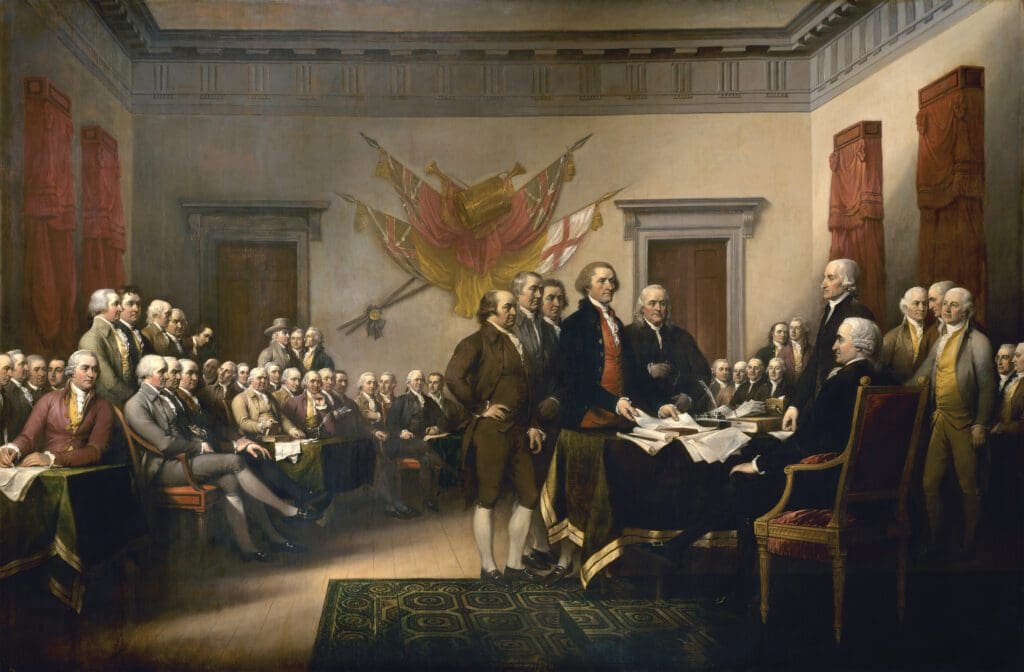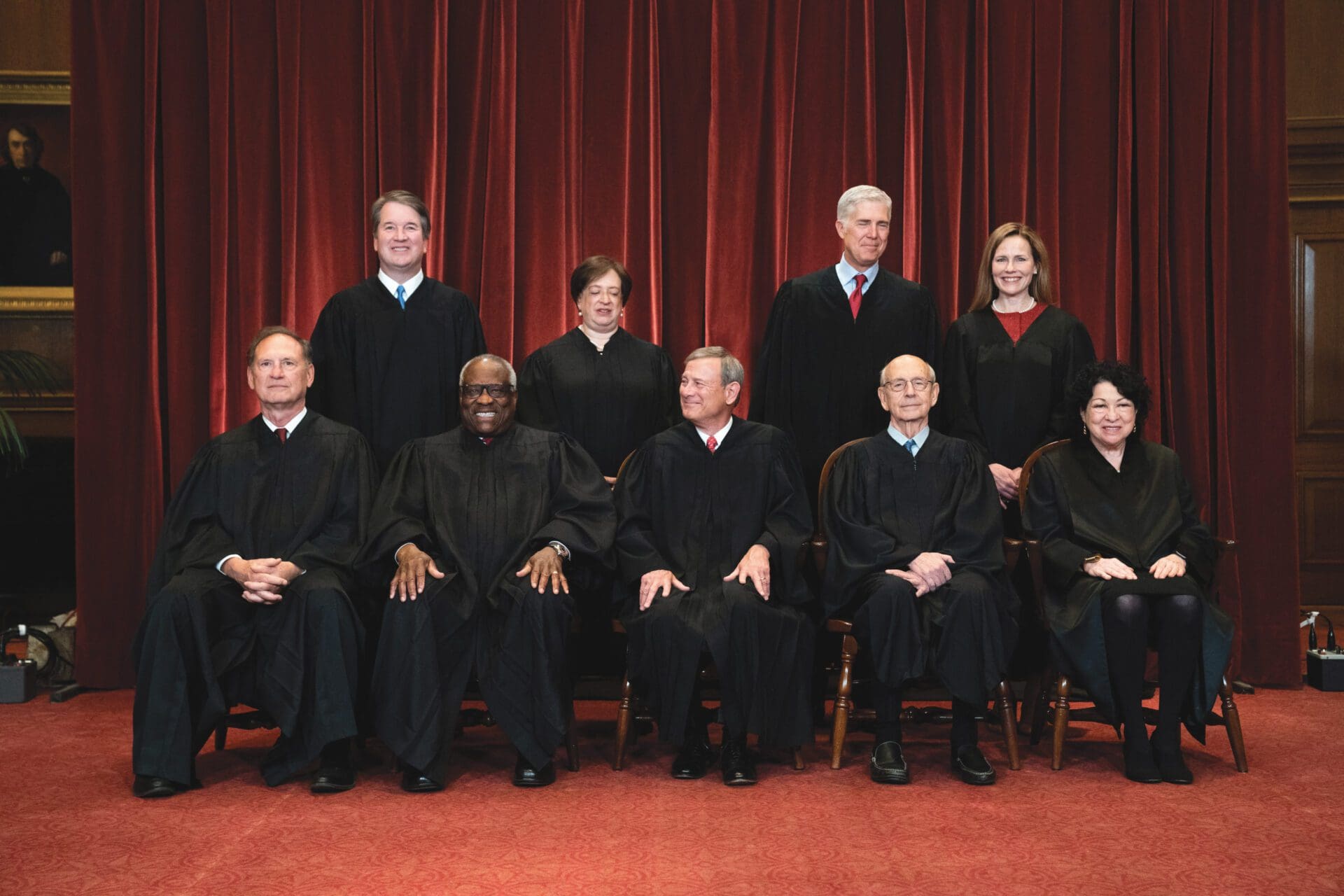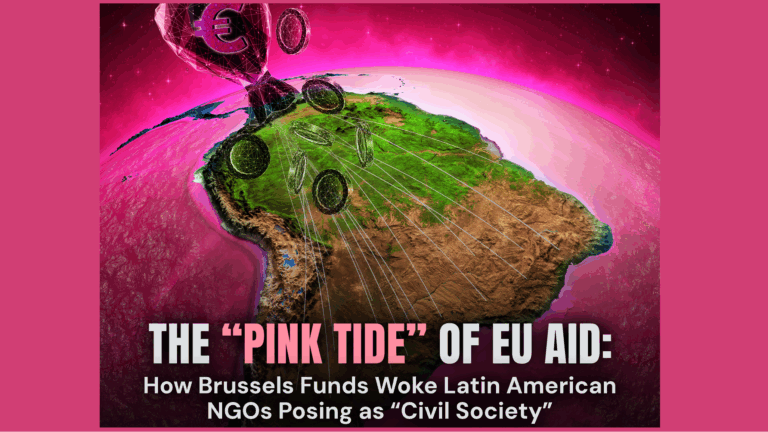First Monday in October is not only the title of the famous movie starring Walter Matthau and Jill Clayburgh,1 but also symbolizes the official beginning of the new term at the Supreme Court of the United States.2 The term usually ends in late June or early July with decisions on key constitutional issues that impact upon fundamental public policy dilemmas and define important aspects of American life. This cyclical judicial calendar has not only become an integral part of the American legal and constitutional architecture, but also increasingly captures the attention of politics and media. In the past years and decades, each ‘October Term’ has been accompanied by growing expectations from both sides of the political spectrum. At the same time, the confirmation processes of judicial nominations have become the subject of angry and vitriolic debates in the US Senate.3
The October Term 2021 that ended with landmark judgements in late June turned out to be a watershed year for the constitutional interpretation that dominates the jurisprudence of the federal judiciary. These landmark decisions not only overrode earlier important precedents such as the Roe v. Wade judgement that provided the right to abortion, but they also signal the beginning of a new era that gives precedence to ‘originalism’. To understand the significance of this paradigm shift, this article first aims to highlight the development and nature of judicial power in the US. Then it turns to the current dilemma that has been created by the diametrically opposing constitutional visions. It also explores why the abortion question has become America’s second Civil War. Finally, it shows how originalism was born and strengthened throughout the past decades and how it has become dominant in the October Term 2021.
I. Judicial Power: Weakest Among the Three Branches or the One That Goes on Forever?
In The Federalist Papers (1788), Alexander Hamilton described the judicial power as the ‘least dangerous’. In his view, the executive power ‘holds the sword of the community’, the legislature ‘commands the purse’ and ‘prescribes the rules by which the duties and rights of every citizen are to be regulated’. However, since the judiciary ‘has no influence over either the sword or the purse’, its operation depends upon the political branches.4 There were moments throughout the history of the United States that demonstrated the merits of Hamilton’s observation. Among the most emblematic of these moments was the Supreme Court decision in the Worcester v. Georgia case of 18325 that protected the Cherokee territory against the regulation of the state of Georgia. President Andrew Jackson, however, backed Georgia and according to the legend said, ‘John Marshall has made his decision, now let him enforce it’.6 And, of course, the Supreme Court was not able to enforce its own decision in Georgia.
Nevertheless, the reason why Alexander Hamilton put forward this thought was rather to calm the antifederalists who feared the centralizing role the federal judiciary would play,7 and also to persuade the states of the need to ratify the Constitution drafted in the Philadelphia Constitutional Convention of 1878.
The Constitution was ratified, but the fears of the antifederalists came true.
Many key questions that concern sovereignty, the competence of the States and the limits of the federal power were left open8 and resolved only later, either in constitutional ruptures such as the Civil War and the New Deal, or by the constitutional interpretation of the federal judiciary.
As the story of the ‘Midnight Justices’ clearly shows, the significance of judicial power was obvious from the very beginning of the country’s history. When the federalist President John Adams (1797–1801) lost the election to his rival, Thomas Jefferson, he filled all the judicial vacancies up until the last hours of his presidential term. The reason behind the nominations of these ‘midnight justices’ was to preserve the survival of his own presidential vision and legacy, and put obstacles in the way of President Jefferson.9 In the early decades of the country’s history, the Supreme Court, led by Chief Justice John Marshall, adopted two fundamental decisions that defined the constitutional future of the United States. On the one hand, in the Marbury v. Madison case (1803),10 the Court established the institution of ‘judicial review’ whereby the federal judiciary is empowered to decide on the constitutionality of regulations and to strike down laws that are declared unconstitutional. On the other hand, in the McCulloch v. Maryland case (1819),11 the Court stated that the Constitution provides the political branches with ‘implied powers’ necessary to carry out the constitutional vision and also declared the federal law supreme over state law. The judgement thus decided the fundamental question whether sovereignty lay with the states as separate entities or the United States as a nation.
The role of judicial power was further increased under Chief Justice (1921–1930) and former President (1909–1913) William Howard Taft. He encouraged the adoption of the Judiciary Act in 1925, which transformed the jurisdiction and competence of the Supreme Court in a way that allowed it to focus on constitutional interpretation instead of adjudication.12 From this time on,
what has become important is not whether the Supreme Court decides the cases in time but how it decides them.
In Taft’s vision, the Supreme Court’s main duty is to check and secure the constitutional operation of the two political branches. In this spirit, he used to say that ‘Presidents come and go, but the Supreme Court goes on forever’.
II. One Country, Two Constitutions?
The Bill of Rights was adopted and attached to the Constitution as a result of the demands of the antifederalists. It was originally designed to serve as a constitutional limit on the reach of the federal government.13 However, not until the beginning of the twentieth century did the Bill of Rights begin to play a significant role in judicial review.14 The Supreme Court proved to be quite restrained in regards to constitutional review in the first century of the country’s history, but even during its more activist period during progressivism, the Court resorted to the contract clause of the Constitution instead of the Bill of Rights to defend the ‘laissez-faire’ economy from state interventions.15
The Bill of Rights has come to the forefront of judicial review for three interrelated reasons. By rearranging the organization of the federal judiciary as well as the competence of the Supreme Court, the abovementioned Judicial Act prioritized the constitutional questions as the prime responsibility of the Court. Secondly, with adoption of the post-Civil War or reconstruction era amendments, especially the Fourteenth Amendment ratified in 1868, a theoretical debate unfolded as to whether the Bill of Rights could be enforced against the states.16 By the 1920s, the Supreme Court put an end to this theoretical debate, began to incorporate the constitutional rights into the Fourteenth Amendment, and declared them applicable constitutional standard to the states. This interpretation has led to a previously unconceivable constitutional centralization in areas like religious freedom, separation of church and state, procedural rights, freedom of speech, or abortion, etc.
The third reason why the Bill of Rights began to play a central role is the rise of a new school of constitutional interpretation known as the ‘living Constitution’. That goes back all the way to the presidency of Woodrow Wilson (1913–1921) and this theory embraces ‘social engineering’ and the role of experts in governance. According to the school of ‘living Constitution’, the interpretation of the Constitution is not definitive once and for all; instead, it can change in a dynamic way and has to be adjusted to the requirements of a given era. The important mission of the judges is to accomplish this adjustment through judicial review and interpretation. All of these three factors gave rise to the era of progressive, rights-based judicial review17 that put the Bill of Rights, along with the Supreme Court, at the forefront of the American constitutional and public policy debates. The Supreme Court became responsible for profound and far-reaching changes in many important areas of American life, while it also transformed the characters of the constitutional order of decision-making in public policy questions. Decisions of judicial power have often distorted or replaced the democratic process and consensus-seeking decision-making of the political branches.
Since the ‘living Constitution’ offered a vision that is irreconcilable with the vision of the Founding Fathers, based as it was on the idea of democratic self-governance,
many political thinkers have pointed out that the United States in fact has two Constitutions,
or at least one Constitution with two diametrically opposing interpretations.18 The ‘living Constitution’ also gave rise to judgements that became subjects of controversy and contributed to the rise and solidification of the conservative legal movement.
III. Abortion and America’s Second Civil War
The theory of the ‘living Constitution’ strengthened and became the dominant mode of constitutional interpretation during the tenure of Chief Justice Earl Warren (1953–1969) who was formerly the Republican governor of California. Under his leadership, the Supreme Court and the federal judiciary began to see their own institutional role not as the guardians of the constitutional conditions of the consensus-seeking democratic process, as envisioned by the Constitution, but as an institution that is best situated to resolve controversial social and public policy questions according to rights-based judicial review. This approach led to the judicial recognition of a plethora of new rights that altered and reshaped the inner balance of the Constitution. One of the prime examples of this development is the expansionary interpretation of the establishment clause of the First Amendment that first led to the centralization of constitutional questions of religion and then to the secularization of public life and the erosion of religious liberty.19 The famous Harvard law professor Paul Freund once pointed out that
the Supreme Court ‘should never be influenced by the weather of the day but inevitably they will be influenced by the climate of the era’.
What he understood by the ‘climate of the era’ was ‘increasing sensitivity toward human rights’ and ‘large conceptions of equality under the law’.20 However, one can also see here an era in which the Supreme Court shaped the climate. Questions of fundamental importance have gravitated towards the Court.
Perhaps, the most celebrated case in the history of the Supreme Court, with good reason, was the Brown v. Board of Education (1954), which declared segregation in public school unconstitutional.21 Even though it was the masterpiece decision of Chief Justice Earl Warren, it could not in itself resolve the question of segregation in the South. Furthermore, it stirred controversy and anger. Hugo Black, one of the Justices, acknowledged at a dinner held by The New Republic: ‘There is going to be trouble and people are going to die, before the tree of liberalism could be renewed in the South, a few candidates must water it with their blood.’22 Real change only began a decade later with the rise of the Civil Rights Movement and the adoption of the Civil Rights Act in 1964.23
What the Brown decision got right, after all, was that it initiated a public conversation on this issue that was finally channelled into political decision-making. However, exactly the opposite happened in most cases during this period, including in particular the Roe v. Wade (1973) decision that also became the symbol of this era. The Court believed itself to have the mandate and ability to resolve the abortion debate that sharply divided and still divides American society. The Justices thought that the Court itself could overcome this debate by simply taking the lead and recognizing the constitutional right to abortion while at the same time sidelining the constitutionally required democratic process. Not surprisingly, however, the decision drafted by the then newly appointed Justice Harry Blackmun did not put an end to this deeply contentious question once and for all. Instead, abortion came to the forefront of American political debates specifically as a result of Roe v. Wade. The decision galvanized the pro-life conservative movement and since the question was isolated from the democratic process, capturing the federal judiciary and the Supreme Court has become the major objective and the dominant issue both in selecting the subjects of litigations and in judicial nominations. Because of these factors,
the question of abortion is at the heart of America’s second Civil War.
Therefore, the Roe v. Wade decision created the very problem the advocates of judicial review seek to avoid or remedy.
Beyond these specific issues, the democratic process has been generally distorted by the growing roles of federal agencies, also called the ‘administrative state’. As a result of increasing centralization, Congress took powers away from the states and then, being overwhelmed partly by regulatory duties and partly by responsibilities, delegated these powers to bureaucratic federal agencies. In their delegated authorities, these agencies were empowered to adopt regulations based on their expertise. The federal government was no longer in a subsidiary but rather in a dominant position. This development was in line with the idea of progressivism and the ‘living Constitution’ whereby governance ought to be able to bring about progress and expertise. Governance became a bureaucratic and professional process instead of remaining consent-based. Consequently, the rise of an ‘administrative state’ that is not subject to democratic election weakened the democratic process and the mechanism of self-government by insulating governance from politics. This also led to the undue influence of the federal judiciary, since remedy against the rulemaking of the administrative state is only possible through courts. Therefore, courts not only became the final arbiters of the overwhelming majority of public policy questions, but also narrowed down the possible set of arguments in such debates to the language and framework of the law.
This gave rise to the phenomenon of the ‘judicialization of politics’ and since the courts became more important,
obviously those who were on the courts also became more important. This increased the stakes of judicial nominations and the judicial politics of presidents since the end of the Warren era in the 1960s. As a result, judicial philosophies or interpretative theories began more and more to align with partisan preferences in a time of increased political polarization.
IV. The Rise of Originalism and Its Dominance
In the face of the domination of the interpretative theory of the ‘living Constitution’, the origin of the modern conservative legal movement can be traced back to two different but interrelated sources. After the failed attempt of President Richard Nixon (1969– 1974) to break the legacy of the Warren Court, President Ronald Reagan (1981–1989) was determined to pursue a ‘judicial politics’ favouring the nomination of committed conservatives. This coincided with the idea of a handful of law school students at Chicago, Harvard, and Yale universities who wanted to learn perspectives other than the dominant ‘liberal orthodoxy’. Antonin Scalia and Robert Bork joined them as faculty members and helped them organize conferences and debates with varied approaches and discussions. This is how the Federalist Society was established in 1982, and how it embraced the interpretative theory of ‘originalism’ which focuses on the text of the Constitution and applies its precepts as they were written at the time.24 In turn, President Reagan’s Attorney General Edwin Meese began to use the Federalist Society as a vehicle to create a pool of conservative lawyers for the president’s judicial politics.

Originalism as the jurisprudential principle and the Federalist Society as an institution became the two major pillars upon which the conservative legal movement rests. However, it took time, effort, and diligent work before this idea bore fruit. It was not until thirtyyears later that originalism finally became the dominant mode of constitutional interpretation
in the federal judiciary. As Justice Elena Kagan pointed out during her confirmation hearing in 2010, ‘we are all originalist now’. And it was the presidency of Donald Trump (2016–2020) and his nominees to the Supreme Court that tipped the balance in favour of the originalist interpretative theory. Due to the three new Associate Justices nominated by Trump, there has been a 6:3 majority for originalist views on the bench since 2020.
The watershed year for originalism to become the controlling method of constitutional interpretation was the October Term of 2021 that ended on the last day of June 2022. The term was not only tumultuous, but also one of the most scandalous in the history of the Supreme Court; it also proved that it is quite accurate to refer to the abortion debate as America’s second Civil War. The draft opinion of the Dobbs v. Jackson Women’s Health Organization was unprecedentedly leaked and subsequent protests turned so violent that the building of the Supreme Court was surrounded by security barriers.25 Later on, a man was arrested near Justice Brett Kavanaugh’s home in Maryland and was accused of attempting to kill the justice. These episodes might also show some of the drawbacks of investing too much power in the Supreme Court.
The emblematic judgement of the term was the Dobbs (June 2022) abortion decision that overrode both Roe v. Wade (1973) and PlannedParenthood of Southeastern Pennsylvania v. Casey (1992), and thus symbolically closed the period of the ‘living Constitution’. The majority’s view is that one needs to stick to the meaning of the Fourteenth Amendment at the time of its ratification in order to understand whether there are rights implicit in the Constitution.
Roe v. Wade was a failure since it did not consider these historical analyses and focused on contemporary concerns.
Even though there were massive protests on both the pro-choice and pro-life sides of the political spectrum, the Court did not make any balancing exercise with regards to the right to life and right to self-determination. In fact, it did not say anything about the constitutionality of the right to abortion since, in its originalist approach, the Constitution does not say anything about it and therefore the question belongs under either the democratic or the constitutional process of the regulatory power of each state. The majority decision sees the question of abortion not as a fundamental rights question on the level of the federal government, but as a question that first needs to be answered in the context of the regulatory powers set by the Constitution. As the Supreme Court gave this question back into the hands of the states, it gives room for consensus-seeking, compromise, and coalition building in state regulations, and at the same time reduced its own power.
Besides the symbolic abortion case, there were other milestone decisions which signal a shift in constitutional interpretation. A notable area is the relation between the neutrality of the state and religious freedom. Under the progressive era, the expansionary interpretation of the former swallowed the latter, upsetting the balance originally envisioned by the Constitution.
Instead of protecting religious liberty for all, the neutrality of state became construed in a way that drove religion out of the public sphere and secularized public discourse. This interpretation aimed to turn people away from religion. In this term’s cases, the originalist majority broke away from this reading of the First Amendment and emphasized that the Establishment Clause must be interpreted with reference to historical practices and understandings.26 Thus, constitutional analysis should focus on the original meaning and history that protects religious liberty as a public good, allowing the search for the transcendent source of meaning and value.
The same originalist approach gained ground in the two cases related to the phenomenon of the ‘administrative state’.27 Both decisions reaffirmed democratic control over federal agencies by stating that the delegation of authority needs to be clear and specific, and courts have the competence to review it. The views of the Supreme Court encourage restoration of the democratic exercise of power by Congress taking responsibility for making and shaping policies, and at the same time also impose constitutional limits on the federal agencies’ rulemaking authority.
The October Term of 2021 shows that the Court is willing and determined to pursue the originalist interpretation in the entire American constitutional law and not limit itself to one or two key areas. The ambition of the Court signals the arrival of a new era in constitutional interpretation which is going to be dominated by originalism.
V. Conclusion
The watershed October term of 2021 certainly deserves to enter the history books. The interpretational shift was a result of decades-long efforts of the conservative legal movement which succeeded in pursuing a broader social conservative agenda. However, the real stake of this shift of constitutional interpretation looks well beyond the question of whether the federal judiciary favours conservative, progressive, or libertarian outcomes in cases concerning timely and important public policies. Instead,
the real stake is whether the originalist shift can restore the democratic process
and structure of governance as they are prescribed by the Constitution and guard over them. That requires the reinstatement of Congress’s responsibility to legislate and the separation of powers both on a horizontal level and between the national government and the states. Furthermore, this shift in the dominant mode of American constitutional interpretation may not only have domestic implications, but can also ripple through the Western world which, in some sense, walks in the same shoes and faces the weakening of democratic processes. However, it remains to be seen in the upcoming October terms whether this watershed moment of originalism will leave a durable mark and whether it can have a ripple effect from an international perspective.
NOTES
1 See https://www.imdb.com/title/tt0082382/.
2 This tradition goes back to 1917. See https:// constitutioncenter.org/blog/why-the-supreme-court- starts-on-the-first-monday-in-october.
3 See, for example, Michael Bobelian, Battle for the Marble Palace: Abe Fortas, Earl Warren, Lyndon Johnson, Richard Nixon, and the Forging of the Modern Supreme Court (Schaffner Press, 2019).
4 See The Federalist Papers No. 78, https://avalon.law. yale.edu/18th_century/fed78.asp.
5 See https://www.oyez.org/cases/1789-1850/31us515.
6 See Henry Abraham, Justices and Presidents: A Political History of Appointments to the Supreme Court (New York–Oxford: Oxford University Press 1992), 95–96.
7 See, for example, George Mason’s arguments, at www.archives.gov/files/legislative/resources/ education/bill-of-rights/images/mason.pdf; Shlomo Slonim, ‘Federalist No. 78 and Brutus’ Neglected Thesis on Judicial Supremacy’, Constitutional Commentary, 23 (2006), 7–31.
8 See, for example, an interview with Christopher Caldwell in February 2021, at https://precedens. mandiner.hu/cikk/20210225_america_eschews_ democratic_accountibility_conversation_with_ christopher_cladwell.
9 See Jeffrey Rosen, The Supreme Court. The Personalities and Rivalries that Defined America (Times Books, Henry Hold and Company, 2007), 28–30.
10 Marbury v. Madison 5 US 137 (1803), https:// supreme.justia.com/cases/federal/us/5/137/#tab- opinion-1958607.
11 McCulloch v. Maryland 17 US 4 Wheat. 316 (1819), https://supreme.justia.com/cases/federal/us/17/316/.
12 Jeffrey Rosen, William Howard Taft (Times Books, 2018), 113.
13 Mark C. Carnes and John A. Garraty, The American Nation. History of the United States (Pearson, 2012), 154.
14 Gordon Wood, Empire of Liberty: A History of the Early Republic, 1789–1815 (Oxford University Press, 2011).
15 Article I, Section 10, Clause 1 of the United States Constitution.
16 Rosen, The Supreme Court, 79–80.
17 Rosen, The Supreme Court, 126.
18 See, for example, Christopher Caldwell, The Age of Entitlement: America since the Sixties (Simon & Schuster, 2020), or Charles Kesler, Crisis of the Two Constitutions: The Rise, Decline, and Recovery of America (New York–London: Encounter Books, 2021).
19 See Everson v. Board of Education, 330 US 1 (1947), www.oyez.org/cases/1940-1955/330us1; Lemon v. Kurtzman, 403 US 602 (1971), www.oyez.org/ cases/1970/89.
20 See Marcia Coyle, The Supreme Court and the ‘Climate of the Era’, https://constitutioncenter.org/ blog/the-supreme-court-and-the-climate-of-the-era.
21 Brown v. Board of Education of Topeka, 347 US 483 (1954), www.oyez.org/cases/1940-1955/347us483.
22 Rosen, The Supreme Court, 155.
23 Richard Bellamy, Political Constitutionalism: A Republican Defence of the Constitutionality of Democracy (Cambridge University Press, 2007), 44.
24 Lénárd Sándor, Alkotmányjogi utazás Amerikában (A Journey in Constitutional Law in America) (Budapest, MCC Press, 2021), 215–222.
25 Dobbs v. Jackson Women’s Health Organization, No. 19-1392, 597 US (2022), https://www.supremecourt. gov/opinions/21pdf/19-1392_6j37.pdf.
26 Kennedy v. Bremerton School District, 597 US (2022), www.supremecourt.gov/opinions/21pdf/21-418_ i425.pdf; Carson v. Makin, 596 US (2022), www.supremecourt.gov/opinions/21pdf/20-1088_dbfi.pdf.
27 West Virginia v. Environmental Protection Agency, 597 US (2022), www.supremecourt.gov/ opinions/21pdf/20-1530_n758.pdf; American Hospital Association v. Becerra, 596 US (2022), www. supremecourt.gov/opinions/21pdf/20-1114_09m1.pdf.








